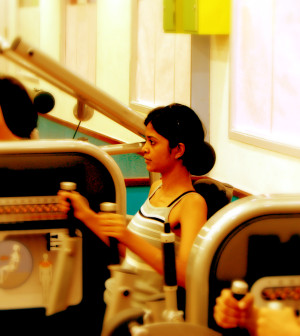- Pandemic Had Only Minor Effect on Young Kids’ Development
- A-Fib More Common in Middle-Aged Folk Than Thought
- What Folks Consider ‘Old Age’ Is Getting Older
- U.S. Measles Cases Reach 125, Surpassing Recent Peak in 2022
- WHO Chief Sounds Alarm on Bird Flu Circulating in U.S. Cattle
- EPA Designates Two ‘Forever Chemicals’ as Hazardous
- Many Parents Cook Special Meals for Little Picky Eaters: Poll
- Relationship With Partner Affects Outcomes for Breast Cancer Survivors
- Parents, Coaches: Help Young Athletes Avoid Summer Heat Hazards
- Hoping to Conceive? Experts Offer Tips to Better Female Fertility
More IVF Tries Improve Odds of Having a Baby

Couples having trouble getting pregnant may have a better chance if they have more than the usual three-to-four cycles of in vitro fertilization (IVF), a new British study suggests.
Among more than 150,000 women in the study, 29.5 percent had a baby after the first cycle. The rate remained above 20 percent through the fourth cycle, and 65 percent of women had a live birth by the sixth cycle, the researchers said.
“IVF should be thought of as a relatively long-term treatment, with repeat treatment cycles if success is not immediate,” said lead researcher Debbie Lawlor, a professor of epidemiology at the University of Bristol.
Currently, it’s common practice to assume that further treatment isn’t likely to be successful after three or four embryo transfers, but that’s not true, Lawlor said. “It is also not true that if there is a small egg yield in one treatment cycle it is not worth continuing with more treatments,” she added.
On average, most couples receiving IVF can have a baby if they repeat treatment up to six times, she said.
“This will take on average two years. Not all couples will want this repeat treatment, and some health care systems, insurance companies and individuals may not be able to afford it. But we believe couples should know what the possibilities are,” Lawlor said.
Dr. Evan Myers, chief of clinical and epidemiological research at Duke University Medical Center in Durham, N.C., and author of an accompanying journal editorial, said, “The question is if insurance won’t pay for IVF, are couples willing to spend those resources on repeated attempts?”
Myers said that each attempt can cost thousands of dollars — $12,000 to $15,000 on average — and in most cases insurance doesn’t cover IVF.
In addition, there are psychological aspects to repeated IVF attempts, he said. “Some couples find the experience stressful,” he explained.
Myers added that spending on additional IVF cycles is also a societal question. “It’s a hard question to figure out how we value infertility treatment relative to all the other things we could be spending money on for health care,” he said.
For individuals, it’s also a tough decision, Myers suggested. “Assuming a couple has the resources both financial and emotional to have multiple cycles, there may be a reasonable chance of having a successful live birth beyond the standard three to four cycles,” Myers said. “But whether it’s worth spending the additional resources is something couples have to answer for themselves.”
The study was published in the Dec. 22/29 issue of the Journal of the American Medical Association.
Nearly 157,000 women from the United Kingdom were included in the study. The women had more than 257,000 IVF cycles between 2003 and 2010, and were followed until June 2012. The average age at start of treatment was 35. The average time of infertility for all cycles was four years, according to the study.
Among women under 40, the birth rate for the first cycle was 32 percent and remained above 20 percent up to and including the fourth cycle, the researchers said. The birth rate at six cycles was 68 percent, the findings showed.
Among women 40 to 42, the birth rate for the first cycle was 12 percent, and 31.5 percent at six cycles. For women older than 42, birth rates for all the cycles were less than 4 percent, the researchers found.
No difference was seen when donor eggs were used. Although birth rates were lower when the male partner was infertile, treatment with sperm injections or donor sperm increased the odds of having a baby, the study authors said.
In addition, the researchers found that the number of eggs retrieved after ovarian stimulation in one cycle does not influence the live birth success rate in later cycles. This finding is important because couples are often told their chances of success with future treatments are likely to be poor in subsequent cycles if they have had no or only a small number of eggs retrieved in the current cycle, Lawlor said.
As with many medical procedures, there are potential risks involved with in vitro fertilization.
According to the American Pregnancy Association, risks include: headaches, mood swings, abdominal pain, hot flashes, and bloating. And, though rare, fertility medications may cause ovarian hyper-stimulation syndrome (OHSS). Symptoms of OHSS can include abdominal pain or feeling bloated. More severe symptoms include: nausea, decreased urination, shortness of breath, faintness, severe stomach pains, a 10-pound weight gain within three to five days.
If you experience any of these symptoms, get in touch with your doctor immediately, the association says.
More information
For more on assisted reproduction, visit the U.S. Centers for Disease Control and Prevention.
Source: HealthDay
Copyright © 2024 HealthDay. All rights reserved.









